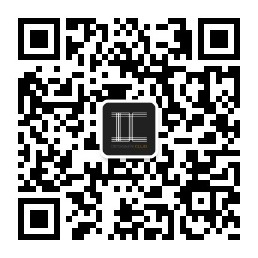
Ship air pollutant emission regulation is expected to be implemented
2021-09-15
author:
Views:
The Ministry of Transport recently issued the "Notice on Printing and Distributing the Implementation Plan for Ship Air Pollutant Emission Control Areas" (hereinafter referred to as the "Notice"), which pointed out that the establishment of ship air pollutant emission control areas (hereinafter referred to as "emission control areas") will reduce emissions. The emissions of air pollutants such as sulfur oxides, nitrogen oxides, particulate matter and volatile organic compounds from ships continue to improve air quality in coastal and inland port cities.
For a long time, limited by the existing thinking mode, my country's standard formulation and restriction requirements on ship pollutant discharge have long revolved around the ship's own discharge of water and solid waste. The idea of ships imposing relevant standards and regulations on the control of air pollutant emissions. Obviously, this traditional thinking is being challenged by the reality of the current air pollution situation that the whole country is highly concerned about.
As early as 2015, when the "Ship Engine Exhaust Pollutant Emission Limits and Measurement Methods (China Phase 1 and Phase 2)" was publicly solicited for comments, there was a call for public opinion to strengthen the supervision of air pollution from ships. The "Three-Year Action Plan for Winning the Blue Sky Defense War" issued recently clearly stated that before the end of 2019, the scope of ship emission control areas should be adjusted and expanded to cover key coastal ports. In terms of standard formulation, standards such as "Marine Fuel Oil", "Ship Engine Exhaust Pollutant Emission Limits and Measurement Methods (China Phase I and Phase II)" have been implemented successively.
Obviously, the issuance of the "Notice" has accelerated the decomposition and implementation of relevant tasks. Regardless of the formulation of standards or the clarification of emission control areas, the purpose is to accelerate the implementation of ship atmospheric emission supervision as soon as possible. According to the "Notice", this plan is applicable to ships sailing, berthing and operating in the coastal control area and the inland river control area in the emission control area. This means that ships in both coastal ports and inland waterways must comply with the relevant requirements of pollutant discharge regulation.
The control requirements specified in the "Notice" include: emission control requirements for sulfur oxides and particulate matter, emission control requirements for nitrogen oxides, requirements for ships to use shore power at ports, and other four aspects, a total of 17 specific requirements. Among them, the emission control requirements of sulfur oxides and particulate matter are the top priority for air pollution emission regulation, and there are many highlights.
For example, the "Notice" clarifies that from January 1, 2019, sea-going ships entering the emission control area should use marine fuel oil with a sulfur content of not more than 0.5% m/m, and large inland river ships and river-sea direct ships should use marine fuel that meets the new revisions. The fuel oil required by the national standard for fuel oil; other inland vessels should use diesel oil that meets the national standard. From January 1, 2020, sea-going vessels entering the inland river control area should use marine fuel oil with a sulfur content of not more than 0.1%m/m.
For another example, the "Notice" also requires that from March 1, 2020, ships that do not use alternative measures such as sulfur oxides and particulate pollution control devices enter the emission control area and can only load and use marine fuel that should be used in accordance with this plan. . From January 1, 2022, sea-going ships entering the Hainan waters of the coastal control area should use marine fuel oil with a sulfur content of not more than 0.1% m/m.
It is not difficult to find that the "Notice" proposes staged emission requirements according to the current air pollution conditions of different waters and inland rivers and the overall state of the atmospheric environment, reflecting the principle of seeking truth from facts, rather than proposing one type of standard across the board. What is important is that the use of ships in different regions will gradually adapt to the new regulatory standards and ensure that the fuel-driven systems of ships are updated in accordance with the requirements specified in the "Notice".
It should be said that for my country, a big country with frequent use of ships, the formulation of emission standards will have an impact on the whole body. According to relevant statistics, my country is a country rich in inland shipping resources. By the end of 2013, China had 172,600 water transport vessels with a net deadweight of 244 million tons. Among the top ten ports in the world, China occupies eight seats and accounts for about a quarter of the world's throughput. The problem of environmental pollution caused by shipping has become increasingly prominent. According to estimates, in 2013, the national ship sulfur dioxide emissions accounted for about 8.4% of the national total emissions, nitrogen oxide emissions accounted for 11.3%. Port cities are most affected by ship pollution, followed by cities along rivers.
In the reporter's opinion, from the perspective of the policy advancement path and logic, the relevant departments of our country have already been alerted to the situation of atmospheric pollutant emissions from ships, so they will gradually promote the upgrade of relevant standards and clarify the area and scope of emission supervision. It is not too late for pollution supervision to reach ships. In particular, the discharge of air pollutants from ships has already posed a threat to the current situation of my country's atmosphere. This threat is more obvious and serious in coastal and riverside areas where ship transportation is more active.
Therefore, from this point of view, it is advisable to look forward to the issuance and implementation of the "Notice". It must be known that once the ship air pollutant emission control area is implemented in accordance with the clear requirements of the "Notice", it means that the aforementioned "Marine Fuels" will be implemented. Oil", "Ship Engine Exhaust Pollutant Emission Limits and Measurement Methods (China Phase I and Phase II)" and other standards will also be implemented simultaneously. At that time, on the one hand, the relevant ship engines and marine fuel standards will be improved simultaneously. On the other hand, the competent authorities at all levels will control and supervise the new ship air pollutant emission areas, strengthen linkage and policy guidance, and make my country's future ship air pollution. The situation of pollutant emissions is becoming more and more clear, which will effectively help the continuous improvement of air quality in coastal and inland port cities.
(Article source: China Economic Times)
undefined
related news
Shanghai Blueway Shipping Service Co., Ltd.
Company address: Room 618-620, No. 716, Pingliang Road, Shanghai
Tel: 13916778555 (Manager Wu)
Tel: 15921119557 (Mr. Cui)
Fax: 86-21-65891180
Mail:15921119557@163.com






